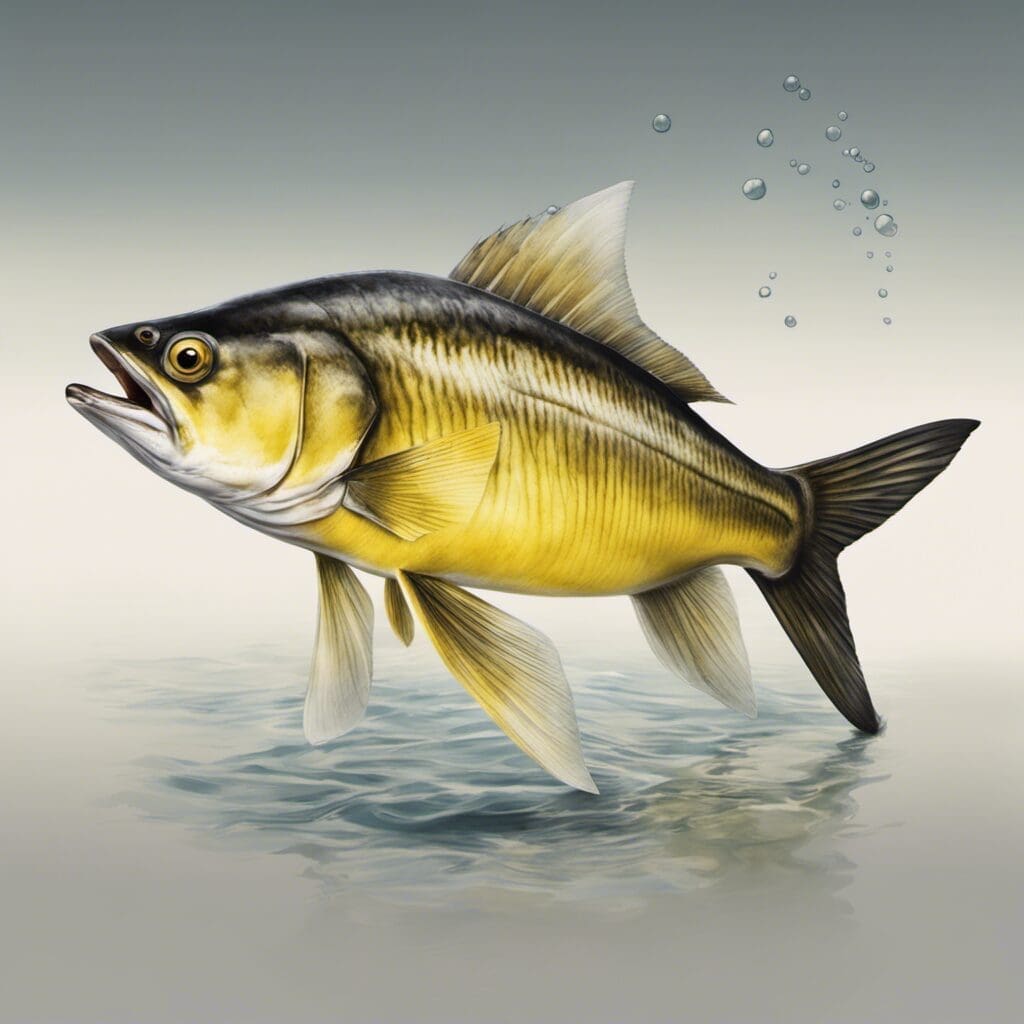Introduction
The Yellow Jack, scientifically known as the Carangoides bartholomaei, is a member of the Carangidae family. This energetic species enjoys a tropical and subtropical existence, making the open waters of the Atlantic Ocean its playground.
Conservation Status
Currently, the Yellow Jack is listed as a species of Least Concern according to the World Conservation Monitoring Centre. This is due to its wide distribution and large population sizes, particularly in the Atlantic Ocean.
Statistics
| Average | Range | |
|---|---|---|
| Length | 40 cm | 15-70 cm |
| Weight | 2.5 kg | 1-5 kg |
| Average Lifespan | 10 years | |
Distribution
This species is predominantly found in the Atlantic Ocean, with a reach extending from North America to Brazil’s shores. Yellow Jack has been observed migrating in large groups, traveling with the changes in water temperature.
Habitats
- Water Type: Saltwater (Atlantic Ocean)
- Depth Range: 1-90 meters
- Temperature Range: 20-28°C
When and Where to See
Migratory patterns indicate an influx of these species around the North American east coast during the summer months. The best viewing time is at dawn or dusk when Yellow Jack are most active.
Best Fishing Locations and Tips
If you’re looking to catch one of these vibrant, snappy swimmers, start with these top fishing spots:
- Gulf of Mexico, USA
- Key West, USA
- Bahamas
- Cuba
- Brazilian Coast
General tips for success include looking for areas with clear, warm currents, preferably at a depth range of 10-20 meters.
How to Catch
- Preferred Bait: Small baitfish and squid
- Techniques: Trolling and fly fishing
- Best Fishing Time: Dawn or dusk during summer months
Identification Guide
Yellow Jack is identifiable by their slender, elongated bodies with a bright yellow coloration, dark blue dorsal areas, and distinctive forked tail. Their overall appearance differs greatly from other Jack species by their more streamlined physique.
Culinary Profile
Yellow Jack’s white, firm flesh is excellent to eat and can be grilled, fried, or used in sushi. It has a sweet, mild taste that absorbs flavors well. Low caloric content, packed with protein, vitamins, and Omega-3 fatty acids make it a nutritious choice.
Additional Information
Significant in the feeding chain, Yellow Jack are both predator, feeding on smaller fishes, and prey to larger predatory fishes and humans. They generally spawn from April to August, with females releasing their eggs into the open water where they are fertilized by males.
References and Further Reading
For further reading and more information, here are some sources:
Note: Always remember to comply with local fishing laws and regulations, respect the marine environment and release undersized, breeding, or non-target species unharmed to where they were caught.

